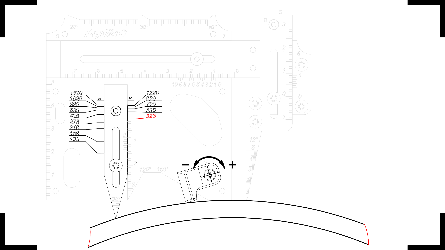Measurement of the crater depth
crater - It is a shrinkage cavity at the end of the weld seam which is
not welded before or during subsequent passes, or it can be a
defect in the weld, which is made in the form of recesses in
the positions of sharp arc separation at the end of the welding
process

positioning the welding gauge
- Set the welding gauge at the zero position
- Pull the fillet arm 2 out of the main gauge plate 1, matching the mark with a value corresponding to the diameter of the pipe being monitored
- Fix and lock the nut position by tightening the fillet arm rivet 6.
- Position the welding gauge on the test object.
- After rearranging the pivots in the groove located on the right side of the welding gauge, adjust them until they come into contact with the inspected object.
- Lock the pivots in this position as shown by the illustration .

˟ the parameter measured during the monitoring
process is highlighted in red
measurement taking
- Adjust the linear member 3 so that the taper gauge 5 is above the point of measurement (at the point of greatest concavity).
- Lower the top High-Lo arm 4 so that the taper gauge 5 makes contact with the surface of the test object at the point of measurement.
- Take the value of the parameter w from the horizontal scale W, and subsequently the readings of the parameter h – from the vertical scale H.
- Use a calculator to determine the desired parameter h illustrated .




